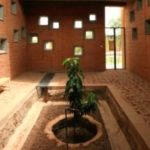-
Michael Degani posted an update in the group
7 months ago Green Building
Green Building The Turducken Kitchen, or Bobos in Paradise with Servant Quarters:
“But then,
behind the first kitchen, lies another. A “messy” kitchen. There, the
preparation for or remainders from a meal or party can be deposited for
later cleanup, out-of-sight, out-of-mind.”So much floor space!
https://www.theatlantic.com/family/archive/2018/05/the-curse-of-an-open-floor-plan/560561/
theatlantic.com
The Curse of an Open Floor Plan
A flowing, connected interior—once a fringe experiment of American architectural modernism—has become ubiquitous, and beloved. But it promises a liberation from housework that remains a fantasy.
Jessie Croteau and Noah1 Comment-
Very interesting. Did not know the history of the open floor plan before reading this.
Also reminded me of a great essay by Jill Lepore from a while back, Are Robots Competing for Your Job? (https://www.newyorker.com/magazine/2019/03/04/are-robots-competing-for-your-job). Long story short, there is always a second kitchen, a place where the real labor is being done…
“The robots, though, were mainly for show. In the nineteen-eighties, Apple called its headquarters the Robot Factory. “To understand the electronics industry is simple: every time someone says ‘robot,’ simply picture a woman of color,” [Louis] Hyman advises. One in five electronics companies used no automation at all, and the rest used very little. Seagate’s disk drives were assembled by women in Singapore. Hewlett-Packard hired so many temporary workers that it started its own temp agency. The most important technology in the electronics industry, as Hyman points out, was the fingernail.”
1
-




